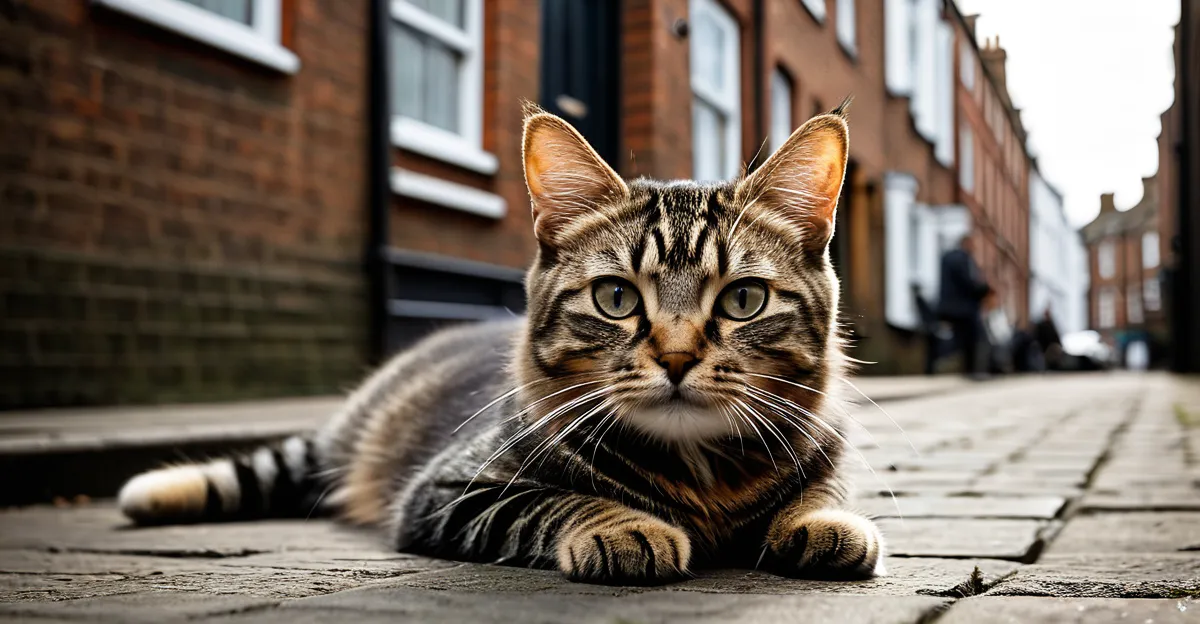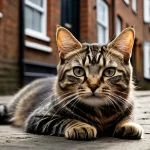Key challenges for cats living in UK urban environments
Cats living in busy UK cities face significant challenges that differ from those in rural areas. Urban cats UK are frequently exposed to dangers such as heavy traffic, which poses a constant risk of injury. Additionally, noise pollution from vehicles and construction can increase their stress levels, impacting their overall well-being. The limited space in city environments restricts natural behaviours like roaming and hunting, diminishing the mental stimulation these pets need.
Behaviorally, city living pets often exhibit signs of stress due to crowded, noisy surroundings. This stress can manifest in reduced activity or changes in social interaction, sometimes resulting in aggression or withdrawal. The lack of varied stimuli also restricts their natural curiosity and exploration tendencies.
In parallel : What Are the Top Health Benefits of Owning a Cat in the UK?
Another challenge involves conflicts with both local wildlife and other neighbourhood pets. Urban areas have smaller wildlife populations, but encounters can lead to fights or transmission of diseases. Cats may also view other city cats as territorial threats, leading to frequent skirmishes. Understanding these challenges is crucial for providing urban cats UK with environments that support their instinctual needs while ensuring safety and harmony.
Strategies to help cats adapt to city life
City cats often face unique challenges compared to their rural counterparts. To support cat adaptation in an urban environment, start by creating a safe and stimulating indoor space. This means providing scratching posts, climbing towers, and diverse toys to satisfy their natural instincts. Such an environment reduces stress and discourages harmful behaviours.
Have you seen this : How do cats in the UK cope with urban environments?
Gradual exposure is key, especially for kittens or newly adopted cats. Introducing them slowly to new sounds, sights, and neighbourhood stimuli helps build confidence without overwhelming them. Controlled socialisation also prevents anxiety related to unfamiliar environments common in city life.
Establishing consistent routines further supports your cat’s wellbeing. Predictable feeding times, play sessions, and quiet periods create a sense of security. City cats often benefit from this structure, which mitigates stress induced by urban noise or bustling activity.
In summary, a thoughtfully curated indoor environment combined with gradual exposure and routine can significantly improve cat adaptation in city settings. Tailoring these approaches to your pet’s personality ensures they thrive despite urban challenges.
Safe outdoor access solutions for urban cats
Providing safe outdoor access is essential for urban cats, enhancing their wellbeing while protecting them from hazards. One popular choice is the installation of catios—enclosed outdoor patios designed specifically for cats. Catios allow feline companions to experience fresh air and stimulation without the risk of roaming free. They can range from simple window boxes to elaborate garden enclosures, offering secure and enriching environments.
For owners who want cats to explore beyond the home safely, leash training is a practical approach. Using a well-fitted harness and gradual training, cats learn to walk under supervision, which limits exposure to traffic, dogs, or other threats common in urban settings. This method demands patience but pays off by providing controlled outdoor experiences.
When considering outdoor time, assessing UK cat safety concerns is crucial. Busy roads, unfriendly animals, and potential poisons are significant risks. Pet owners should evaluate their neighbourhood carefully and tailor outdoor options accordingly, combining secure structures like catios with leash walks. This balanced approach ensures cats enjoy the outdoors without compromising their safety.
Indoor enrichment ideas for city-dwelling cats
City living poses unique challenges for urban indoor cats, making indoor cat enrichment essential to their wellbeing. Without outdoor access, feline stimulation must come from thoughtfully designed environments.
Interactive toys are a cornerstone of enrichment. Toys that mimic prey, such as feather wands or motorized mice, engage a cat’s hunting instincts. Rotating these toys regularly keeps them novel and exciting. Scheduled playtime, ideally twice daily, provides predictable mental and physical challenges that stave off boredom.
Vertical space enrichment is another vital strategy. Installing climbing trees and wall shelves allows urban indoor cats to exercise their natural climbing behavior safely. Safe window perches provide a stimulating vantage point to watch birds or passersby, enriching their sensory environment without risk.
Incorporating puzzle feeders during play adds a rewarding element, encouraging problem-solving and mental engagement. This layered approach ensures urban indoor cats receive comprehensive enrichment, helping prevent stress-related behaviors and promoting overall health.
By focusing on varied and dynamic feline stimulation, city owners can successfully transform indoor spaces into enriching playgrounds for their cats.
UK-specific advice and legal considerations for urban cat owners
Understanding your responsibilities for happy, healthy city cats
In the UK, cat owners must follow various laws that promote responsible pet ownership and improve UK cat welfare. While cats aren’t strictly required by law to be kept indoors, local councils encourage containment, especially at night, to protect vulnerable urban wildlife such as birds and small mammals. Preventing cats from roaming unsupervised reduces injury risk and wildlife impact.
Fitting cats with a collar containing a bell is common advice. Bells warn wildlife of the cat’s presence, lowering hunting success rates and benefiting local ecosystems. The Humane Slaughter of Animals regulations also influence pet welfare standards in the UK, pressing owners to minimize harm.
For owners seeking support or advice about urban cat care, numerous UK-based organisations and veterinary experts specialize in urban cat needs. They provide guidance on containment strategies and welfare, ensuring cats thrive safely in city environments. Connecting with these resources helps owners balance cat wellbeing with wildlife protection.
Urban pet ownership in the UK demands awareness of legal duties and ethical considerations. Following advice such as night-time containment and bell collars contributes to safer, healthier communities for cats and wildlife alike.
How Robot Hoovers Navigate Your Home
Understanding how robot hoovers move around is key to appreciating their efficiency and ease of use. Modern robot hoovers use a combination of sensors and algorithms to map and clean your home’s floors effectively.
Most robot hoovers deploy LIDAR sensors, infrared sensors, or cameras to detect obstacles, measure distances, and avoid falling down stairs. This sensory input helps the robot build a mental map of your home’s layout. For example, LIDAR-equipped models perform a 360-degree scan, accurately capturing room dimensions and item positions.
Once mapping is complete, the robot uses sophisticated software to optimize cleaning paths. Instead of random wandering, many robot hoovers follow systematic, back-and-forth movements, ensuring even coverage without unnecessary repetition. This approach maximizes cleaning efficiency, reducing battery consumption and finishing tasks faster.
Additionally, navigation systems allow robot hoovers to remember no-go zones, specific rooms, or areas requiring more attention. You can personalize these settings via smartphone apps, tailoring the cleaning process to your preferences.
In essence, understanding the technology behind robot hoover navigation reveals how these clever devices combine sensors, mapping, and smart algorithms to deliver thorough, hassle-free cleaning—perfect for busy households seeking convenience and reliability.


